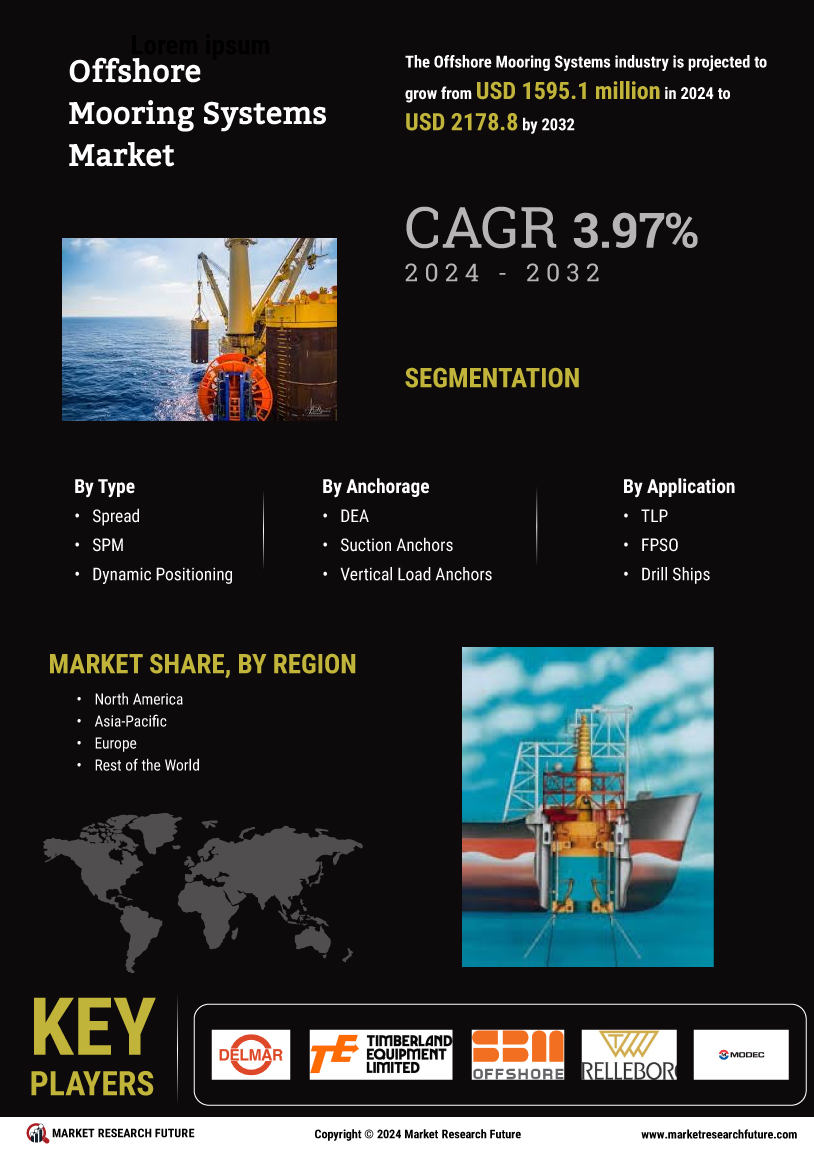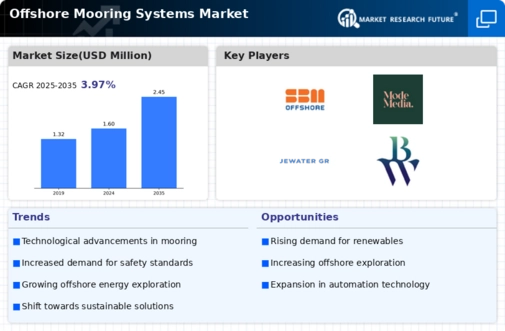Market Trends and Projections
The Global Offshore Mooring Systems Market Industry is characterized by several key trends and projections. The market is expected to grow from 1.6 USD Billion in 2024 to 2.45 USD Billion by 2035, reflecting a steady increase in demand driven by various factors such as renewable energy expansion and oil exploration. The projected CAGR of 3.97% from 2025 to 2035 indicates a positive outlook for the industry, suggesting that stakeholders are likely to invest in innovative mooring solutions to meet the evolving needs of offshore operations.
Increasing Demand for Renewable Energy
The Global Offshore Mooring Systems Market Industry is witnessing a surge in demand driven by the expansion of renewable energy projects, particularly offshore wind farms. As countries strive to meet their energy transition goals, investments in offshore wind energy are projected to increase significantly. For instance, the global offshore wind capacity is expected to reach 234 GW by 2030, necessitating advanced mooring systems for stability and safety. This trend is likely to contribute to the market's growth, with the industry projected to reach 1.6 USD Billion in 2024, reflecting a robust shift towards sustainable energy solutions.
Regulatory Support for Offshore Projects
Regulatory frameworks and government support are crucial drivers for the Global Offshore Mooring Systems Market Industry. Governments worldwide are implementing policies that promote offshore energy projects, including streamlined permitting processes and financial incentives. For instance, the European Union has set ambitious targets for offshore renewable energy, which encourages investment in mooring systems. This supportive regulatory environment is likely to stimulate market growth, as companies seek to comply with regulations while maximizing operational efficiency. The anticipated growth in offshore projects is expected to contribute to the market reaching 2.45 USD Billion by 2035.
Growing Focus on Environmental Sustainability
The Global Offshore Mooring Systems Market Industry is increasingly influenced by the growing focus on environmental sustainability. Companies are under pressure to adopt eco-friendly practices, which includes the use of sustainable mooring solutions that minimize environmental impact. For example, the adoption of biodegradable materials in mooring systems is gaining traction as companies aim to reduce their carbon footprint. This shift towards sustainability is not only a response to regulatory pressures but also aligns with consumer preferences for environmentally responsible operations. As a result, the market is likely to see increased investments in sustainable mooring technologies.
Technological Advancements in Mooring Systems
Technological advancements play a pivotal role in shaping the Global Offshore Mooring Systems Market Industry. Innovations such as dynamic positioning systems and advanced materials are enhancing the reliability and efficiency of mooring solutions. For instance, the introduction of synthetic ropes and smart monitoring systems is improving the performance of mooring systems in harsh marine environments. These advancements not only reduce operational costs but also enhance safety measures, making them attractive to operators. As a result, the market is expected to grow at a CAGR of 3.97% from 2025 to 2035, reflecting the industry's adaptation to technological progress.
Expansion of Oil and Gas Exploration Activities
The Global Offshore Mooring Systems Market Industry is significantly influenced by the ongoing expansion of oil and gas exploration activities in deepwater and ultra-deepwater regions. As energy demands rise, companies are increasingly investing in offshore drilling to tap into untapped reserves. For example, the Gulf of Mexico and the North Sea are witnessing renewed exploration efforts, which require advanced mooring systems to ensure operational efficiency and safety. This trend is expected to bolster the market, with projections indicating a growth trajectory that could see the industry valued at 2.45 USD Billion by 2035.














